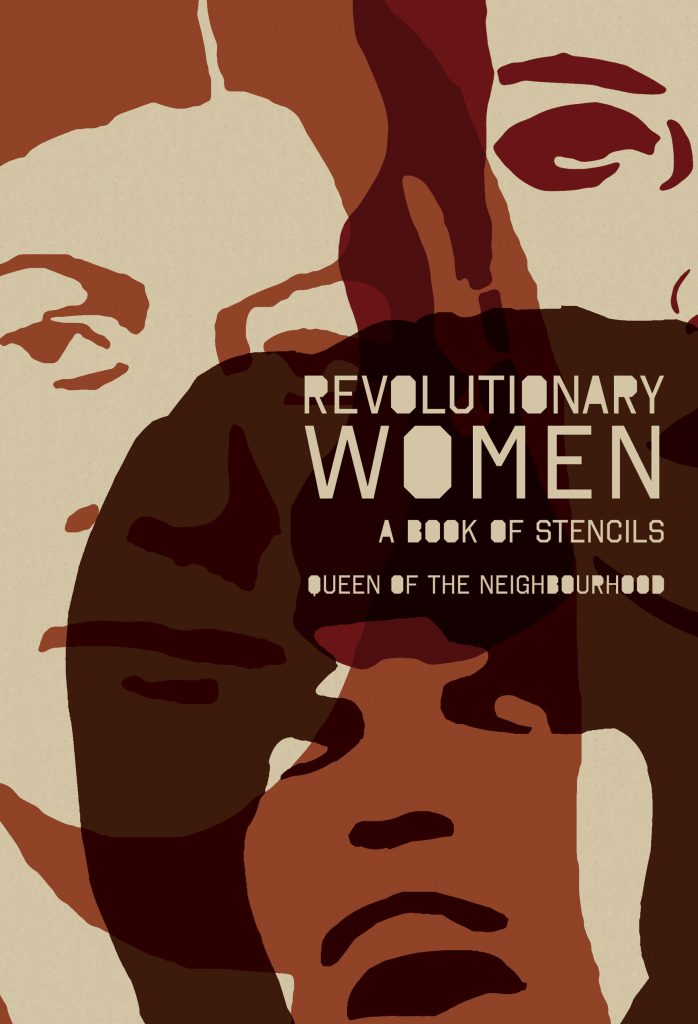Bloody Mary Riot Grrrl Zine
Translated by Google
November 25th, 2010
The Grafitian Handle of Female Emancipation
The New Zealand feminist collective Queen of Neighborhood released the book Revolutionary Women in November 2010. A Book of Stencils. The slim booklet is a combination of short biographies of thirty women who have played an important role in various revolutionary or human rights fights from the nineteenth century to the present, and their portraits adapted for template spraying. Vandany Shivy, Emmy Goldmann and Lucía Sanchez Saornil peek at you on the streets of Auckland a week after the book launch.
The book focuses on revolutionaries from different cultural and ideological backgrounds, from the anarchists of Mujeres Libres, through Hariet Tubman, Leila Khaled, Phoolan Devi to the less well-known names of revolutionaries basically from around the world. (So I’m looking forward to thoroughly reading the portraits at least a bit of my Euro-centrist perception of the world.) The templates are very simple in their design, but still expressive, so all we have to do is to paint and spray walls and sidewalks, T-shirts, patches or whatever comes under your hand.
When I got the book for review, I thought Well, good, but what’s the point of it all? Isn’t it just a primitive attempt to promote women, whatever they are – whether pacifists or terrorists, whether socialists or anarchists? Does the box woman just need to be included in this book?
These questions are answered by Tui Gordon’s introductory word, which moves the book a few orders of magnitude higher. Indeed, Tui is aware of all this, and many more, more subtle things.
He explains how the whole idea of revolutionary templates came from the simple dissatisfaction that the media landscape is occupied by male icons such as Che Guevara or Bob Marley (now a consumerist pop culture of emptied images with a romantic touch without knowing what these men actually did), and how more and more questions and contradictions gradually appeared. Indeed, Tui fully acknowledges the irony behind her attempt to create icons. In addition to some sort of emptying and hacking of the concrete, with the heroization of the individual comes also the suppression of the meaning of other people, the entire community in which this person lived, created and fought. Moreover, the romanticization of the revolution is simply a middle-class and high-class game that transforms revolutionary combat into commodities, while many revolutions come from utter poverty and suffering.
Tui also admits problems with choosing revolutionaries in this book. She writes: “Women in this book are extremely different from each other: some would not like such a glorification of their ego, others would be flinching on their page, forced by this canon of revolutionaries to relate to other women who have little to do with them and their views vastly different. ”
The team also tried to turn a book of revolutionaries around the world, not just Europe and North America. Therefore, in his essay, Tui also notes the issues of gender and race, and generally the struggle of local people, natives, against global economic / political / cultural domination. Here again, the irony of icon creation touches on, because the templates in the book are mostly taken from mainstream media colossus.
Revolutionary Women has a label on the back cover: “The History of Radical Feminism and the Source of Street Art for Inspired Readers and Readers!”. This sentence doesn’t lie, but I think it actually stays on the surface of the project. Templates and biographies? Great, what next? Fortunately, Tuin’s introduction encourages to think about the controversy of the book, and so he is already arguing in advance with perhaps justified criticism of the notion or certain flatness of this graphical handbook of female emancipation.







